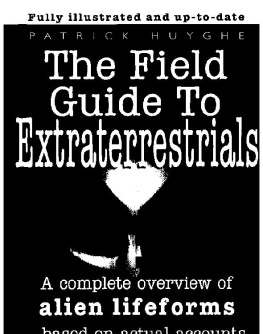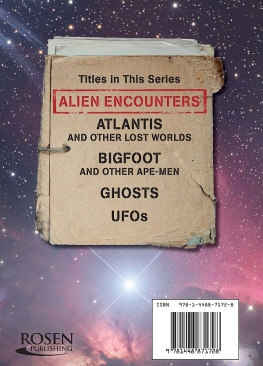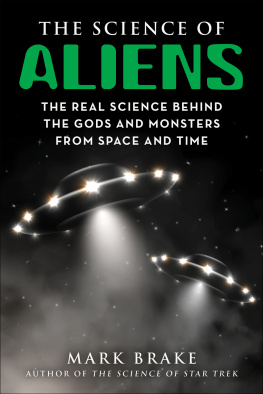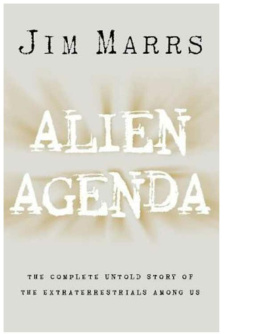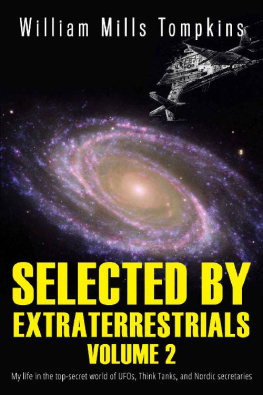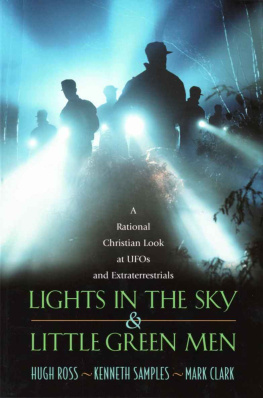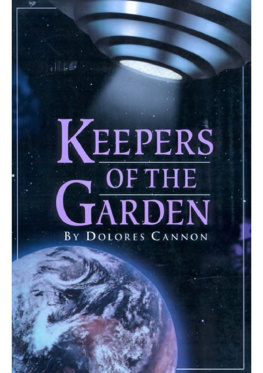WHAT IS REAL?
Welcome to The Field Guide to Extraterrestrials. Though it may sound like science fiction, it most definitely is not. This volume is based entirely on eyewitness reports of alleged UFO aliens. These reports come from all around the globe and from people of all walks of lifepolice officers, farmers, doctors, truck drivers, lawyers, pilots, children, and housewives, among others. And these encounters have been going on for a long, long timeat least a century or more.
If these creatures really are what they appear to be extraterrestrialsthen this guide should prove absolutely indispensable ...
From the Introduction
Patrick Huyghe has been writing about scienceand UFOsfor nearly twenty-five years. His work on UFOs has appeared in such diverse forums as The New York Times Sunday Magazine, Newsweek, New Age Journal, and Science Digest. For the last dozen years, his articles on the subject have appeared exclusively in Omni magazine.
The Field Guide to Extraterrestrials
Patrick Huyghe
Illustrated by Harry Trumbore
NEW ENGLISH LIBRARY Hodder and Stoughton
Copyright 1996 by Patrick Huyghe Illustrations by Harry Trumbore
First published in Great Britain in 1997 by Hodder and Stoughton, A division of Hodder Headline PLC
A New English Library paperback
The right of Patrick Huyghe to be identified as the Author of the Work has been asserted by him in accordance with the Copyright, Designs and Patents Act 1988.
10 9 8 7 6 5 4 3 2 1
All rights reserved. No part of this publication may be reproduced, stored in a retrieval system, or transmitted, in any form or by any means without the prior written permission of the publisher, nor be otherwise circulated in any form of binding or cover other than that in which it is published and without a similar condition being imposed on the subsequent purchaser.
British Library Cataloguing in Publication Data A CIP catalogue record for this title is available from the British Library.
ISBN 0 340 69503 X
Printed and bound in Great Britain by Cox & Wyman Ltd, Reading, Berkshire
Hodder and Stoughton
A Division of Hodder Headline PLC
338 Euston Road
London NW1 3BH
For Larry W. Bryant
CONTENTS
Introduction
What Is Real?
A Little History
The Aliens
Who's Who?
About This Guide
The Classification System
Classification Table
Humanoid
Animation
Robotic
Exotic
Afterword
Too Human? Or Too Many Aliens?
Those Grays
Beyond Looks
Where Do They Come From? What Do They Want?
Patterns
Things Are Not What They Seem
Evidence
Acknowledgments
Bibliography
Case Index
BACK COVER
INTRODUCTION
What Is Real?
Nature lovers have their National Audubon Society Field Guides. Science-fiction buffs have Barlowes Guide to Extraterrestrials: Great Aliens from Science Fiction Literature. And folklorists have A Field Guide to the Little People by Nancy Arrowsmith and George Moorse. But what about the 5 million Americans who, as a recent Roper Survey suggests, may have been abducted by UFO aliens: What do they have? Well, nothinguntil now.
Welcome to The Field Guide to Extraterrestrials. Though it may sound like science fiction, it most definitely is not. This volume is based entirely on eyewitness reports of alleged UFO aliens. These reports come from all around the globe and from people of all walks of lifepolice officers, farmers, doctors, truck drivers, lawyers, pilots, children, and housewives, among others. And these encounters have been going on for a long, long time at least a century or more.
If these creatures really are what they appear to be extraterrestrialsthen this guide should prove absolutely indispensable, especially if you think you've encountered an extraterrestrial or consider yourself a true-blue UFO believer. It might even be wise to adapt the travel advice of Leonard Maltin and American Express for this field guide: Don't get lost in space without it.
If you're a skeptic, no doubt you' laugh at this idea. But I want to make it clear that I am not out to convince the reader of the reality of extraterrestrials. I do not wish to change any minds, only to open a few eyes. I'll be the first to admit that these UFO stories are quite unbelievable. And I would agree that the evidence for the reality of extraterrestrial aliens is not conclusiveonly suggestive. So if you decide to look down skeptically on these stories, you have every right to do so. There may very well be a psychological explanation for this material, though so far no one has made a truly convincing case for one.
What I have done here, quite simply, is taken "nonfiction" at counts of UFO entities and proceeded with the assumption granted, a very large onethat these reported beings are what the witnesses and investigators say they are, that is, extraterrestrials. For the purposes of this book I will assume that these UFO-related aliens are real.
Belief actually doesn't matter. Whether you think that encounters with UFO aliens are physically real or mere hallucinations is irrelevant. We have field guides to wildlife. We have dream dictionaries. We have folklore encyclopedias. Some deal with things that are objectively real, others deal with things that are subjectively real. But whatever the nature of the reality, our knowledge of it can be organized.
With Madison Avenue appropriating aliens to sell their products, it's clear that our culture's current intense interest in all manner of things extraterrestrial has now attained corporate-level strength. So before the subject becomes warped beyond all recognition, I've decided to present this who's who to the extraterrestrial horde.
A Little History
Eyewitness reports of contact with alien beings seen in crafts descending from the sky are now at least a century old. The first apparent claim of contact with an alien craft reportedly took place on November 25, 1896. That afternoon Colonel H. G. Shaw and his companion Camille Spooner were nearly abducted by three tall creatures with large eyes who eventually departed in a cigar-shaped craft. Shaw was convinced the craft and the beings were from Mars. The story, though probably regarded as a tall tale at the time, is remarkably similar to those that appear in great abundance today, nearly a century later.
Reports of close encounters with alleged aliens continued to appear after the turn of the century. Incidents occurred in the summer of 1901 in Bournebrook, England; in 1910 in Baltimore, Maryland; in 1919 in western Australia; in 1925 in La Mancha, Spain; in 1944 in Rochester, Pennsylvaniaand right on up to and after June 24, 1947, when a sighting of several mysterious craft by pilot Kenneth Arnold led a newsman to label these objects "flying saucers." Within weeks of this milestone event, encounters with little men from spaceships were reported in Tennessee, Italy, and France. It should be noted that most flying saucer investigators of the time rejected these humanoid stories as just too fantastic. The flying saucer stories were already hard enough to believe; tales of UFO pilots were just beyond the pale.
By the early 1950s, the reports of encounters with spacemen took on a wholly different look. Some people were beginning to claim close contacts with the "space brothers." These encounters were of a less fearful nature than earlier reports and also less a product of chance. And the spacemen looked different, too. They were very human, often tall, blond and beautiful.
One of the first contactees was George Adamski, a Polish-born emigre who worked a food and drink stand on the slopes of Mount Palomar in California and took pictures of what he claimed were alien spaceships. Then on November 29, 1952, he drove out into the desert with some friends to see a spacecraft. When it arrived, Adamski had his friends wait a mile away while he went off to meet a man he claimed was from Venus.

